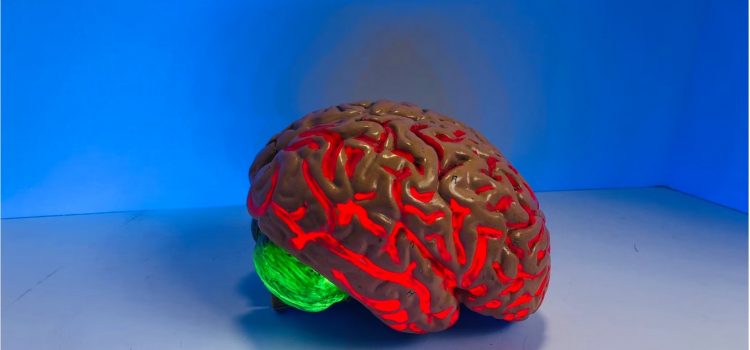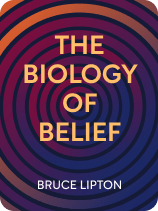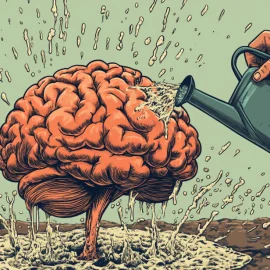

This article is an excerpt from the Shortform book guide to "The Biology of Belief" by Bruce Lipton. Shortform has the world's best summaries and analyses of books you should be reading.
Like this article? Sign up for a free trial here.
Why is reprogramming your subconscious mind good for your health? Do you want to do better for future generations?
The Biology of Belief by Bruce Lipton offers two major pathways for healing. The first includes approaches to parenting that program your children’s minds in healthy ways, and the second is how to reprogram your own mind with mindfulness and “energy psychology” techniques.
Continue reading to learn the science behind reprogramming the subconscious mind.
Program Your Children’s Minds
The most obvious way we can do better for future generations is by being more conscious and intentional about the programs we’re embedding in children’s minds, which may involve reprogramming your subconscious mind. Lipton says to try to remain consciously aware that you didn’t just pass on your genes through the reproductive process—you’re actually genetically engineering your children during their childhoods. What you embed in your children’s minds has the capacity to influence the way their genes are expressed throughout their lives.
So if you have, or plan to have, children or grandchildren, here are a few things Lipton suggests:
- Begin with a healthy prenatal environment. Your influence on your children begins before they’re born. Lipton cites studies that link physical and mental disorders such as osteoporosis, psychosis, and mood disorders to prenatal and perinatal environmental influences. Expectant mothers should be aware that their behaviors and moods influence the environment in which their child is forming.
- Create as calm, supportive, and safe an environment as possible for your children. Your children will pick up on negativity, such as anger and fear, in their environment, and their own bodies will respond to this by producing the associated chemical environment.
- Give ample physical love and nurturing affection. Lipton points out that anthropologists have noted that the most peaceful societies tend to indulge their children when very young, holding them most of the day. By contrast, those that don’t show much physical affection to children tend to be more violent.
- Encourage creative and cooperative play over competitiveness. This fosters the natural human instinct toward cooperation for survival, and engaging in creative pursuits can encourage the brain to move into a state of “flow,” which are associated with theta waves.
| Early-Life Stress Impairs the Brain and Immune System The field of psychoneuroimmunology studies the complex interactions between psychological processes, the nervous system, and the immune system, exploring how these systems influence each other and impact our health and well-being. Research in this field has found that early-life stress can affect immune system development and brain functioning. A 2016 study explains that this is because the brain and immune system are not fully formed at birth but continue to mature in response to the environment after birth. So, this allows childhood stress to affect immune system development, which can then affect brain development and functioning. The authors of this study suggest new strategies, such as anti-inflammatory compounds for boosting immunity, that could be used to reduce the impact of childhood trauma before symptoms appear. These strategies could also potentially be used in treatment of psychiatric patients with a history of childhood trauma. |
Reprogram Your Own Mind
Whether you have children or not, addressing your own subconscious programming is also crucial. Lipton says there are many techniques to rewrite your mental programs, including mindfulness techniques and some newer “energy psychology” methods.
Practice Mindfulness
Mindfulness is essentially a process of bringing your conscious and subconscious minds into harmony. Lipton explains that we don’t have to be at the mercy of our subconscious programming, because our conscious minds have the capacity to step in and direct the show. But that takes hard work because our conscious minds are used to wandering much of the time.
As Lipton explains, when your conscious mind is busy thinking about the past or the future (which is most of the time), your subconscious is left in control of the present. This means it’s constantly making decisions and interpreting the world based on your childhood programming. Your conscious mind is only in charge when it’s fully engaged in the present moment. So, Lipton says, undertaking a mindfulness meditation practice can help you train your conscious mind to stop wandering and take charge of the decisions you make.
Mindfulness practice is helpful for learning how to temporarily override your unconscious programming and choose different reactions to life situations. But Lipton emphasizes that for far-reaching effects, you’ll need to actually overwrite the programming that’s already in place, not just learn to manage it better. This is where energy psychology comes in.
| Meditation Is Training for Mindfulness Many people think of mindfulness and meditation as the same thing. But mindfulness is a state of being, while meditation is a practice you use to train yourself to become mindful. Mindfulness has two main components: attention and acceptance. The attention piece is about tuning into your experiences and focusing on what’s happening in the present moment. This means becoming more consciously aware of your thoughts and feelings, the physical sensations in your body, and what’s happening in your immediate environment. The acceptance piece involves observing those feelings, sensations, and external conditions without judgment. Instead of responding or reacting to them, you aim to note them and let them go. To do mindfulness meditation, find a quiet space to sit and settle in. Close your eyes, take a deep breath, and relax. Focus on your breath and stay focused. When thoughts try to pull your attention away from the breath, come back to your breath. You can also focus on each part of your body, in order, from toe to head or head to toe. You can find many guided mindfulness meditations online, for example on the Insight Timer app. |
Explore Energy Psychology Techniques
The term “energy psychology” applies to several different techniques and methods for reaching into your subconscious mind—for example, hypnosis, neuro-linguistic programming (NLP), and kinesiology (the study of body movement) are among them. Lipton doesn’t discuss many of these methods in detail, but instead directs the reader to his website for more information.
The important thing to know about these methods is that they use implicit messaging (sometimes called “subliminal” messaging) to reach your subconscious and overwrite the existing programs. As mentioned above, this is most effective when one is in a theta brain wave state. The theta state is associated with deep meditation and hypnosis, so energy psychology methods often involve an attempt to shift your brain waves from their normal alpha state to the lower-frequency theta state.
However, Lipton points out that you have access to a theta wave state every day—just as you are falling asleep at night, you slip into theta waves before you drop into the delta wave sleep state. This offers you an opportunity every night to get some implicit messaging into your brain. You can do this by listening to meditations and affirmations designed to imprint positive thoughts into your brain as you enter this programmable state.
| Use “Tapping” to Relieve Fear and Anxiety The website of the Association for Comprehensive Energy Psychology (ACEP) includes a page of “Resources for Resilience.” On this page, you can click on the psychological issue you’re confronting—for example, anxiety, fear, anger, or confusion—and you’ll be directed to a collection of resources for dealing with that issue. These include videos and downloadable instructions for different energy psychology techniques, such as breathing patterns, postures, eye movements, and tapping specific points on the body. One of the techniques included here is called Trauma Tapping Technique, also sometimes referred to as the Emotional Freedom Technique (EFT). This is a method of tapping on specific acupressure points on your body while focusing on the issue you wish to treat. In this video, Nick Ortner of The Tapping Solution shares an introductory, three-minute EFT tapping technique you can do anywhere to reduce stress and even stop a panic attack. |

———End of Preview———
Like what you just read? Read the rest of the world's best book summary and analysis of Bruce Lipton's "The Biology of Belief" at Shortform.
Here's what you'll find in our full The Biology of Belief summary:
- That your mindset matters more than your genetics when it comes to health
- How your thoughts affect your immune system and hormones
- Why humans should join together in a community to aid survival






